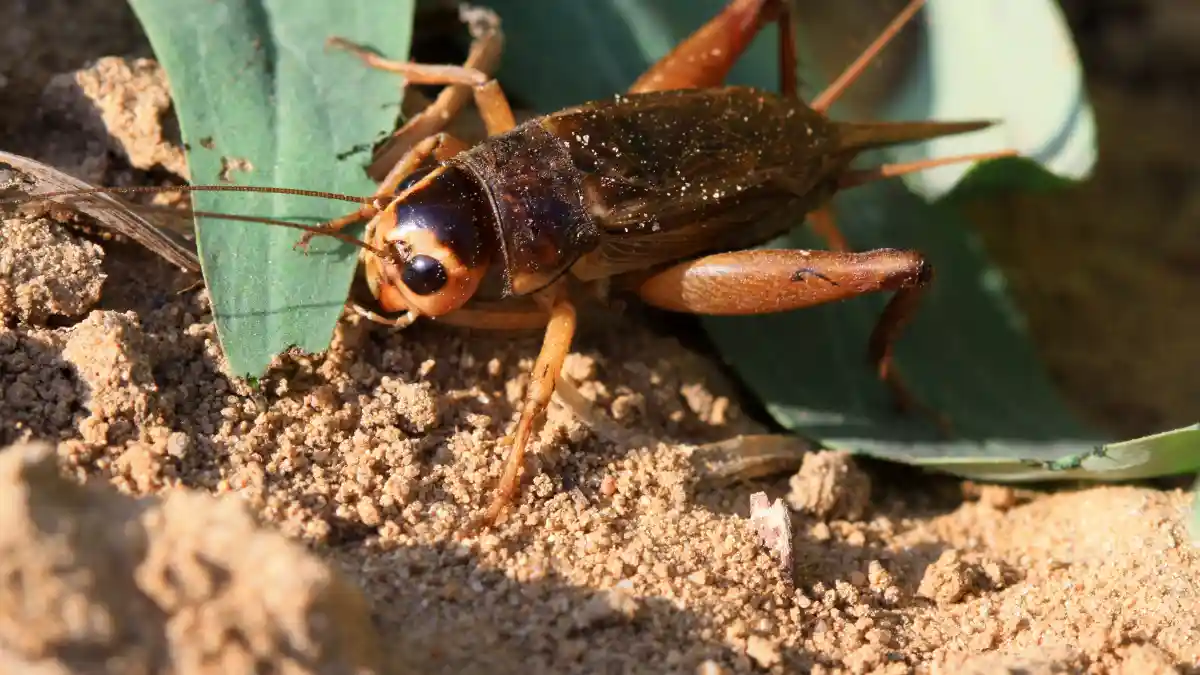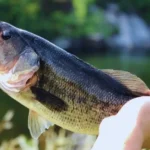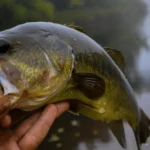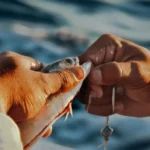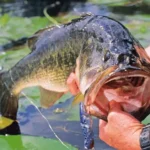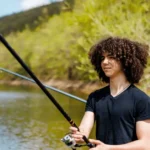Crickets make excellent bait for catching fish – their natural movement in the water perfectly resembles vulnerable insects and drives fish wild. To fish with crickets, carefully hook them through the collar or upper back to keep them lively on the line as long as possible. Then allow the current to impart natural cricket action, drifting them into spots where ambush predators lie in wait like submerged structure, creek bends, and lily pads.
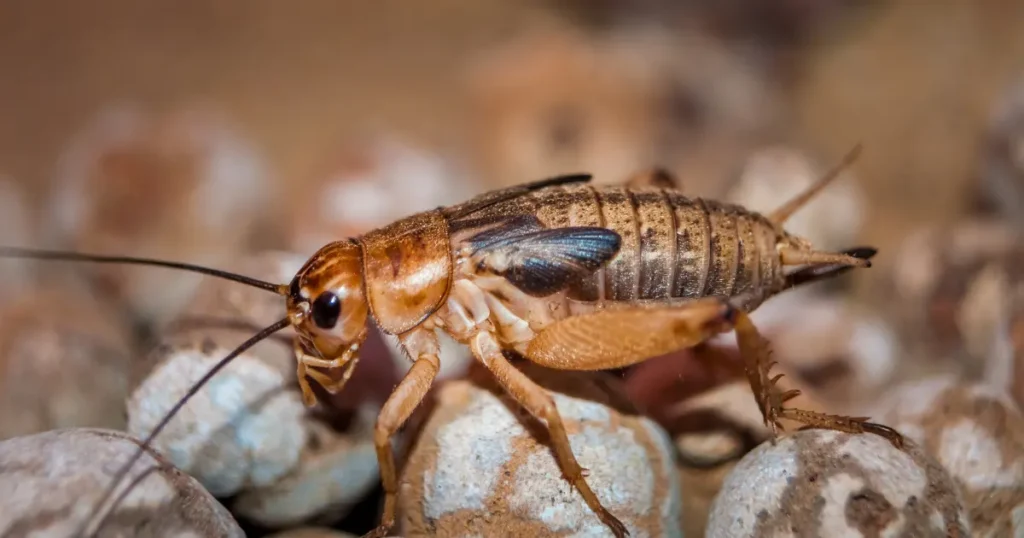
For anglers looking to improve their fishing game, learning to fish with crickets can lead to incredibly exciting catches. Crickets make for lively, tantalizing bait that drives fish wild. When a cricket plops into the water, it’s natural kicking and squirming resembles an actual insect struggling in the currents, triggering feeding instincts in the fish below.
Whether you’re hoping to reel in trout, bass, catfish, or panfish, drifting a lively cricket in front of their lair will prove far more productive than traditional bait and lures. So, if you want to experience some heart-stopping strikes and thrilling battles on the water, it’s time to master the highly influential art of how to fish with crickets.
Key Takeaways:
- Crickets attract trout, panfish, bass, carp, and catfish with their tantalizing movement and high-protein profile.
- Capturing your crickets is ideal, but live bait shops and pet stores sell them.
- Keep crickets vigorous by housing them in aerated tanks with hiding spots and proper feeding.
- Carefully hook crickets in the collar or upper back to keep them lively on the line.
- Allow the current to impart natural action, and slowly lift/drop bait to mimic insects falling in the water.
- Target structures like submerged trees, lily pads, and creek bends where ambush predators wait.
Benefits of Fish with Crickets

Here are some of the main benefits of fishing with crickets:
More Action
Crickets kick and struggle in irresistibly lifelike ways, triggering aggressive reaction strikes from fish used to feeding on insects. Their movement stands out compared to motionless baits.
Bigger Catches
Since crickets represent a hearty, protein-packed meal, they tend to attract larger-sized fish ready to expend energy on nutritious bait. Trophy fish can’t pass them up!
Natural Presentation
Crickets drifting helplessly in the water column perfectly resemble vulnerable insects that have fallen in. Fish are accustomed to honing in on this scene.
Long Lasting
Crickets stay lively on the hook longer than worms, allowing more time to tempt curious fish. Their durable shell also withstands multiple hits.
DIY Bait
Unlike purchased bait or lures, aspiring cricket anglers can collect their lively appeal for free by sweeping nearby grass and gardens. It satisfies the urge to fish spontaneously.
Exciting Topwater Hits
When allowed to float unmanned, the disturbance of a wounded cricket kicking about drives surface feeders into a visible frenzy. Explosive strikes ensue!
The Allure of Fishing with Crickets
Crickets hold a number of unique advantages as bait:
- Their small size and helpless kicking perfectly resemble insects accidentally dropped in the water – a frequent meal for predatory fish.
- The chitinous exoskeleton protects the hook puncture while keeping the bait intact through multiple strikes.
- High calcium and protein content make crickets a nutritious, appealing meal.
- They can be easily collected on one’s property for free bait.
- Livelier and longer-lasting on the hook than earthworms or prepared dough baits.
Simply put, drifting a live cricket into a likely fish hangout kicks the feeding instinct into overdrive. The scent, movement, profile, and taste create an irresistible package.
Species Known to Attack Crickets
| Fish Species | Reasons for Aggression Towards Crickets |
|---|---|
| Trout | Insectivorous diet – they expect terrestrial bugs to fall in the water |
| Panfish | Abundant around thick vegetation – they consume high insect volumes |
| Bass | Opportunistically strike any easy meal that crosses their path |
| Carp | Vacuum anything from insect larvae to crustaceans from bottom muck |
| Catfish | Attracted to struggling creatures disabled by currents |
Choosing Your Cricket Bait
Catching Your Own
Collecting your crickets allows selecting the liveliest, healthiest specimens for bait:
- Use homemade nets, traps, and lidded pails at night when crickets are most active.
- Target areas in grass, gardens, and flower beds where they congregate.
- Cherry-pick frisky adult crickets while releasing injured, small, or sluggish ones.
Buying Crickets
Check bait shops and pet stores, and order farm-raised crickets when capturing them yourself isn’t practical:
- Scrutinize batches at the store – reject lethargic or damaged crickets.
- Established bait shops and cricket farms offer the healthiest options.
- Buy 1-2 days worth of bait for maximum liveliness.
Caring for Crickets
With regular feedings and proper housing, crickets can thrive for 1-2 months as bait:
- House in aerated multi-gallon tanks with hiding spots.
- Feed lettuce, oatmeal, rice, fruits, vegetables, and high-calcium grit.
- Avoid overcrowding and clean tanks regularly.
- Crickets enter dormancy when chilled – store leftover bait in the refrigerator for a short time.
Hooking a Cricket Properly
Anatomy Review
| Body Part | Characteristics | Importance |
|---|---|---|
| Head | Triangular shape above cervical collar | site for shallow collar hook sets |
| Collar | Bony plate segment protecting the neck | shallow insertion point for hook |
| Wings | Large rear wings covering silky abdomen | allow natural movement in water |
| Legs | Robust rear legs for jumping | impart tantalizing kicks |
| Cerci | Paired tail-like appendages | resemble common baitfish tails |
Recommended Hooking Equipment
- Aberdeen hooks (#4-8)
- Clear plastic cricket-holding cup
- Needle nose pliers for precision
- Light monofilament line (4-8 lb test)
Hooking Step-by-Step
- Grip cricket gently but firmly behind the wings in a cupped hand.
- Locate the collar, expose the back, and orient the hook point.
- Slowly insert the hook point just underneath the upper exoskeleton behind the head.
- Wiggle further back so the barb and bend emerge beneath the collar.
- Slide cricket down onto the hook shank – adjust depth as needed.
- Confirm vigorous movement before gently casting.
Presenting Crickets for Success
Maximizing Appeal
- Allow the current, wind, and rod twitches to impart naturally erratic action.
- Fish most aggressively strike insects struggling helplessly at the surface.
- Let crickets drift unweighted before implementing floats, jigs, or sinkers.
- Mimic-hatching insects and terrestrials fall into the water column.
Depth Adjustments
- Target subsurface feeders like crappie by adding split shot sinks 1-2 feet above the hook.
- Dangle crickets near the bottom structure with sinker rigs for catfish and bass.
- Carefully work crickets through the strike zone with occasional subtle lifts.
Strike Detection
- Floats indicate timid pick-ups that would otherwise be missed on tight lines.
- Pay close attention to line and rod movement for taking in heavy current.
- Set hooks sharply to penetrate thin skin after feeling or seeing any unnatural bait activity.
Prime Species to Catch on Cricket Baits
Trout – A drifting cricket is trout bait perfection, irresistible to their opportunistic insectivore instincts. Both stream and stocked lake trout variants inhale this dynamic offering.
Panfish – Aggressively strike cricket bait from spring through fall while guarding spawning beds and patrolling thick vegetation. Their sharp teeth dismantle each cricket rapidly.
Bass – Subtly worked crickets trigger violent topwater and subsurface strikes from bass patrolling shorelines, open water, pond edges, and rivers.
Carp – Vacuum crickets from silt, sand, or mud in shallow bays and coves. Deliver cast after cast to these often finicky titans for heart-stopping boils and runs.
Catfish – Cats with their keen sense of smell hone in on struggling cricket bait pinned just off the bottom in moderate river currents and lake channels.
Advanced Cricket Fishing Tactiques
- Chum the water by shaking loose crickets above target zones to get schools fixated in a feeding mood.
- Follow crickets with brightly colored tube jigs to convert any head-shakers into solid hookups.
- Fish after dark under bright moonlight or LED lamps – many monsters only feed at night.
Fishing Crickets from Shore vs Boat
Shore Fishing Hotspots
- Creek bends
- Half-submerged trees and brush
- Docks, piers, and marinas
- Inlets and current breaks behind the structure
Boat Fishing Strategies
- Use fish finders and charts to electronically map concentrations of baitfish holding with gamefish.
- Note prime ambush points like humps, ledges, and channels.
- Control your drift to guide crickets right through high-probability strike zones.
Storing Crickets Long Term
Refrigeration Tips
- Chill crickets at 38-45 degrees Fahrenheit to enter a dormant state, slowing metabolism.
- Fridge survival can extend to several months.
- Bring back to room temperature before baiting up.
Freezing Best Practices
- Purge crickets in a dry container for several hours before freezing to reduce moisture.
- Sprinkle desiccant grits like cornmeal or wheat bran.
- Freeze below 32 degrees F for 1-3 months maximum.
- Thaw frozen crickets fully submerged in cool water before use.
Here are Some Case Studies Illustrating the Effectiveness of Fishing with Crickets
Case Study 1: Catfishing Success on the Mississippi
When longtime catfish guide John S. took a group out on the Mississippi River near St. Paul, MN, the bite was frustratingly slow using traditional stink bait rigs. In a last-ditch effort, John rigged up a simple Aberdeen hook/split shot/bobber setup and put a lively cricket off the muddy bottom.
Immediately, his clients started getting takes and ended up boating over a dozen chunky channel cats up to 15 lbs in the last hour – more than the previous two hours combined! The crickets produced intense activity during harsh mid-day conditions.
Case Study 2: Sizzling Summer Panfish Action
Middle schooler Amy N. struggled to catch anything beyond tiny perch and a rare crappie this summer while fishing the local pond…until her grandpa taught her the cricket technique. Finding a swarming spot beneath a fallen oak, they gently let crickets drift 3 feet under bobbers.
The bobbers immediately started vanishing amid splashing strikes – they had found the motherlode! In no time, Amy boated several jumbo pumpkinseed sunfish and slab yellow perch pushing 12 inches long, her personal bests. The crickets drove the panfish into a frenzy all afternoon long.
Case Study 3: Doubled Trout Limits with Crickets
Veteran trout fisherman Walter S. consistently caught 3-4 decent rainbow trout on mornings using in-line spinners on his favorite Downeast Maine stream. When the action slowed one foggy fall day, Walter switched gears and free-lined crickets into the same deep eddies and foam lines.
First, drifting into the head of a promising pool produced an aggressive 17-inch brown trout on the first cast. Over the next hour, Walter landed not 3 or 4 – but 11 gorgeous brookies and rainbows, doubling his usual catch on the crickets. They proved deadly in the low morning light.
Frequently Asked Questions
What are the best hooks for baiting crickets?
Long-shanked Aberdeen hooks between sizes #4 and #8 are ideal. The thinner gauge helps secure crickets without excessive damage while exposing the barb sufficiently for good hookups.
Should I tip my jigs, floats, or sinkers with anything to make crickets more appealing?
Tip jigs with maggots or corn kernels to leave a scent trail. Spray floats and sinkers with fish attractants like shad or crawfish formulas for extra fish-drawing odor dispersion.
How do I keep crickets at optimum vigor on scorching, hot, sunny days?
Carry crickets in a small cooler with reusable ice packs while fishing to keep the interior under 85 degrees. Rotate ice packs back to the cooler when they warm up. Mist the containment cup with water.
Is using frozen rather than live crickets worthwhile?
Freezing crickets kills them, eliminating much of the movement appeal, but retains scent to attract curious sniffs. Thoroughly thaw and move frozen crickets with rod twitches. Live is best, but firm works when necessary.
During what time of day/night should I concentrate my efforts?
Target dawn, dusk, and dead night on moonlit nights or under bright lights. Limits and structure become more defined in low light. Overcast days allow fishing crickets all day. They are most active at night, naturally.
Final Thought: How to Fish with Crickets
As we’ve seen, fishing with crickets can produce outstanding results across a variety of freshwater species. Their lively movement and tasty, nutritious profile prove irresistible to opportunistic predators. By mastering proper cricket care, rigging techniques, and understanding fish behavior, you’ll be hauling in bucket mouths left and right.
While it does take some practice to get the hang of handling these jumpy insects, the rewards of learning how to fish with crickets make it all worthwhile. So next time you hear crickets chirping near the water, grab your rod and get ready to reel in the big ones! Give this unique and highly effective style of how to fish with crickets a try this season.

